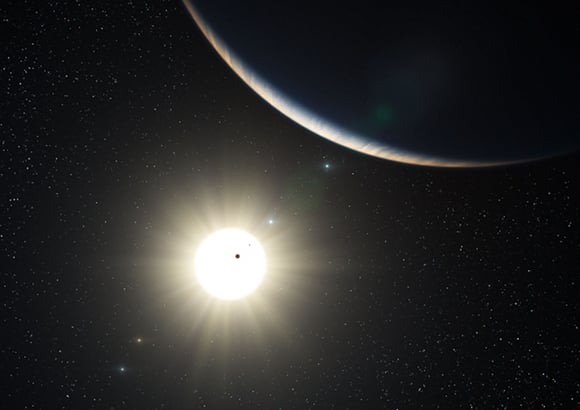This article is more than 1 year old
Super-Earths' magnetic FORCE FIELDS could harbour ALIEN LIFE
Little green men/microbes may lurk safe from cosmic rays
A geo-boffinry study has found that super-Earths could have oceans of liquid metal and magnetic shields that protect life on their surfaces.

The heat and pressure inside planets bigger than Earth but smaller than Neptune alters the magnesium oxide in their rocky mantles, according to new scientific calculations, transforming it into liquid metal.
Magnesium oxide was blasted by investigating boffins with high-powered lasers to simulate the conditions on planets three to ten times as big as our own. In those conditions, with pressure three to 14 million times atmospheric pressure and temperatures of up to 90,000 degrees Fahrenheit, the mineral transformed into a solid with a new crystal structure and then into a liquid metal.
As it melts, the magnesium oxide changes from an electrically insulating material in which electrons don't flow easily to a metal similar to iron that allows electrons to pass easily through the material.
"It is often thought that a planetary magnetic field protects life on a planet's surface from harmful space radiation, like cosmic rays," geophysicist Stewart McWilliams, with the Carnegie Institution and Howard University, told Discovery News.
"What we find is that magnetic fields may exist on more super-Earth planets than expected, resulting from the transformation of the planet's rocks to metals in the deep interior. This could create new environments for life in the universe."
Planetary scientist David Stevenson of Caltech said the field "certainly affects the way life evolves".
"I think it is an open question as to whether its absence inhibits the development of life," he added.
As well as raising possibilities of life-protecting magnetic shields, the study complicates existing models of how planets form and evolve.
"Melting in planets is very important. In planets like the Earth, melting leads to many features of the world around us - volcanoes, and the Earth's magnetic field, for example.
"In the early history of planets like Earth, it is possible the entire planet was liquefied, forming a deep ocean of magma on the surface. Even today, some super-Earth planets may have these magma oceans," McWilliams said.
On some of the planets however, the magma is replaced by liquid metal, made up of the magnesium oxide as well as magnesium silicate and quartz.
"To really understand a planet we need to model the whole thing," McWilliams said. "This can be done with advanced computer codes, for example, that describe the formation of a planet's magnetic field. I think the next step is to see if models can confirm our findings."
The study was published in Science. ®
